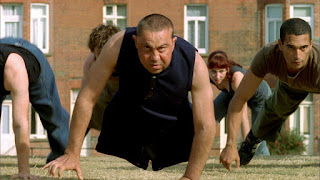Skip to main content
Unit 1: Physical Theatre
Unit 1: Physical Theatre Introduction
What is Physical Theatre?
- Is a form of theatre that emphasizes movement instead of dialogue, such performers use very little or no dialogue with the expression of ideas choreographed through movement.
- In comparison to, say, text in a play or music and lyrics in an opera, physical theatre is a style of performance where physical motion is the main method of storytelling. In order to create performance pieces, other techniques such as mime, motion and modern dance can also be integrated.
Who are DV8?
- Since its establishment in 1986, Lloyd Newson has directed DV8 Physical Theatre. His practice has had a complex influence on theatre and contemporary dance.
- The work of DV8 is characterized by the ability to clearly express ideas and feelings with an emphasis on social political questions. By using any possible method to find the most suitable way to express something, the work questions the limits of dance, including elements of theatre, dance, video, also text.DV8 has toured work in the UK and 28 countries around the world and won 55 national and international awards.
- The work of DV8 Physical Theatre is about risk-taking, aesthetically and physically, breaking down the boundaries between dance, theatre and personal politics and, above all, simply and unpretentiously expressing ideas and feelings.
'The Cost Of Living':
https://www.dv8.co.uk/projects/the-cost-of-living/pregramme-copy
- The cost of living is a British physical dance theatre film made in 2004 by DV8 films.
- At the end of summer, the main characters Dave (David Toole) and Eddie (Eddie Kay) are out-of-work actors in a seaside resort. In spite of his disability, Dave is a double amputee dancer determined to preserve his freedom. Eddie is a gritty, violent character who believes in fairness and respect. Dave and Eddie meet and connect with other people living on the fringes of society through a series of scenes and dances.
- The definition is focused around how an individual within society can or can not be recognized as normal. It focuses on the control of revolving stereotypes and problems.
- Themes: Disability, relationships, Alcohol, Drugs, Bullying, Inferiority, Superiority and Social status.
- There are many themes in the piece, and the movement was strongly influenced by the theme during this time. For instance, the effects of alcohol and substance abuse in social settings such as clubs and parties were demonstrated by a part of the dance (which was in a club setting). In this scene, the movement was not so much dancing, but more movement that represented drunk and errant behaviour under the influence. This is immediately indicates the audience that there is alcohol being used in effect in the film.



Comments
Post a Comment